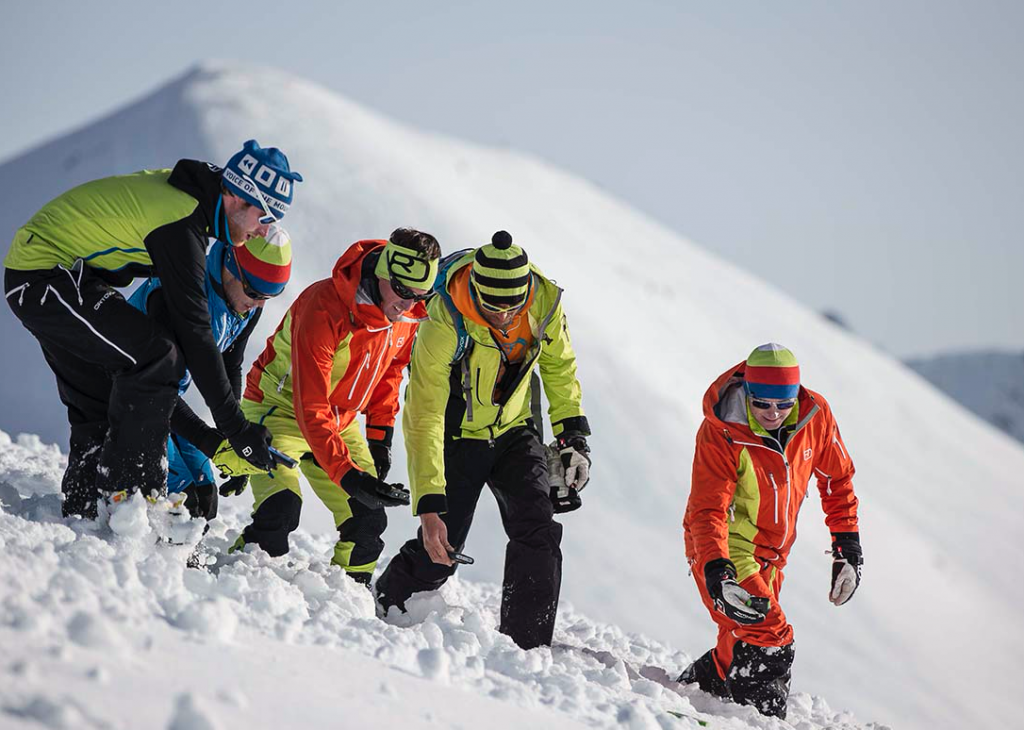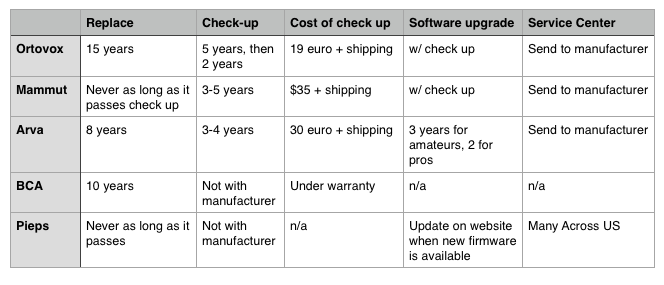
Photo Courtesy of Ortovox.
by Liza Sarychev
An avalanche transceiver is an indispensable tool for anyone traveling in avalanche terrain. Since not only you, but also your partner’s life depends on the proper function of this device, so how come it is unclear when it should be updated?
Various manufacturers suggest different lifetimes of their beacons which range anywhere from 8 years to forever. Similarly, most manufacturers suggest you send in your transceiver to their headquarters for an electronics check up and firmware update every 3-5 years, except BCA which encourages customers to self-check their transceivers and does not offer a manufacturer’s electronics checkup.
Below is a chart of manufacturer recommendations for beacon maintenance and replacement.

All of these manufacturers are using the same basic three antennae technology, with some differences in firmware, and since their electronics aren’t all that different, why does the suggested beacon lifetime vary so much, and why is the check-up process is so different?
Even though it’s recommended by the manufacturer, very few consumers send their beacon in for a check-up. I’ve had my beacon for 6 years and have never sent it in for a check-up because of the cost, the hassle of shipping to Europe, and time the service takes. Similarly, to my knowledge, none of my peers have sent a beacon in for service either. If check-ups are important, why don’t manufacturers send an email reminder and a shipping label in the fall for a hassle-free check-up process? Not to excuse the user from the responsibility of maintaining their own beacon, but this method would increase check-up volumes.
It is more practiced to do an at-home beacon inspection for physical damage and transmission range prior to the ski season, but the proper transmission range isn’t a well-established number. So when you don’t know what your transmission range should be, how do you know when it’s not right?
Another issue with beacons is how sensitive they are. For proper beacon care, one must not keep it in the cold, jostle it, avoid moisture, keep it away from large magnets, and take the batteries out for the summer. For a device that’s meant to be used in the cold, meant to be attached to a skier in movement, and meant to be used around snow (moisture), why is proper beacon care pretty much leaving it at home and on the counter?
The product cycle for most ski industry products? 1 year. Product cycle for avalanche transceivers? 4-5 years. So every year manufacturers innovate skis, but transceiver innovation is taking much longer. It seems archaic that a searcher has to walk an inefficient flux line while holding it parallel to the ground to find a quickly dying ski partner, but I can take a glance at my iPhone and instantly locate 10 or more people with the “Find My Friends” app. Is there a more efficient technology that could be used for beacons?
If beacons are such a crucial lifesaving device, why are they not more standardized across the industry? Why is the system set up so the average skier does not do their due diligence to ensure their beacon is in proper working order? And why is the technology so inefficient?
You Might Also Like Heuristic Traps Are a Major Factor in Avalanche Fatalities
